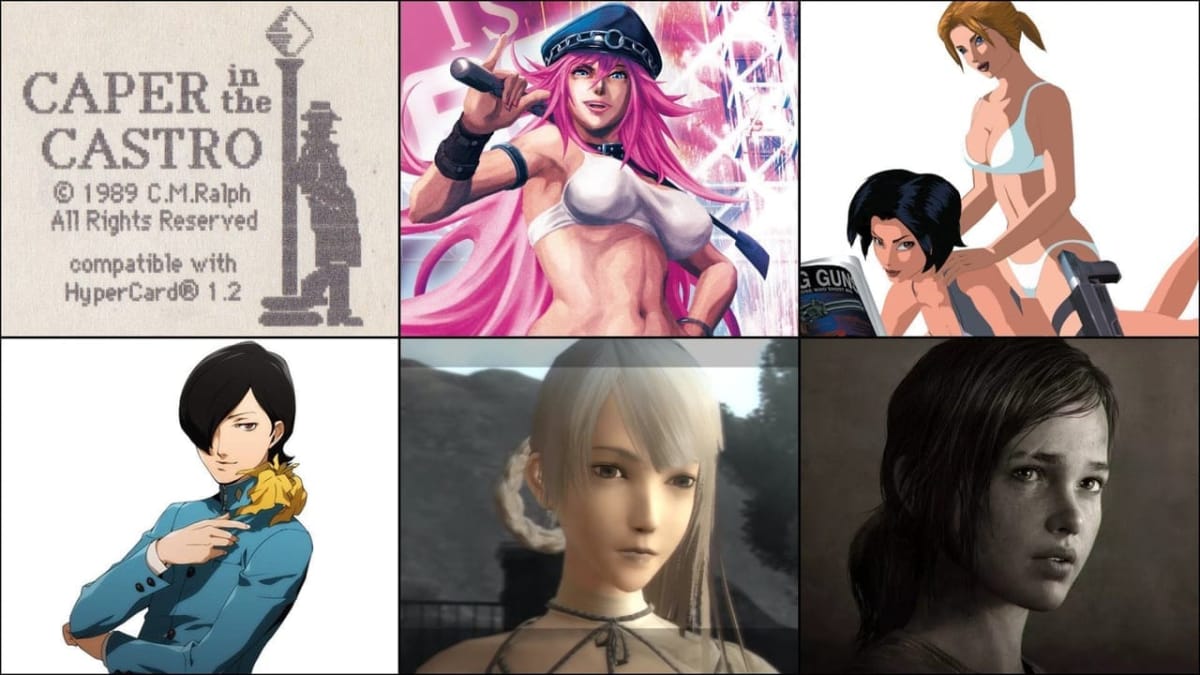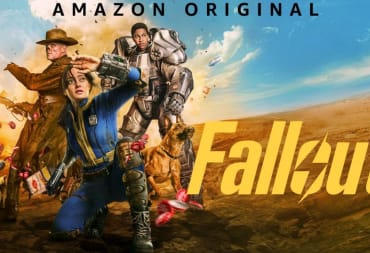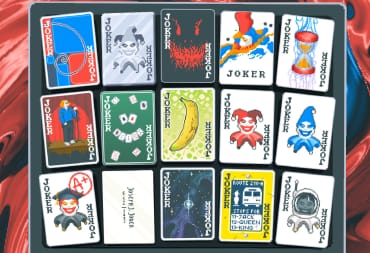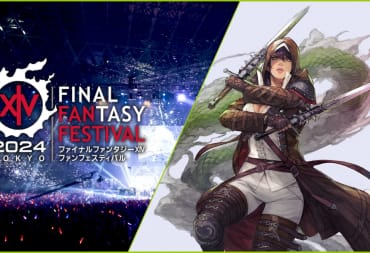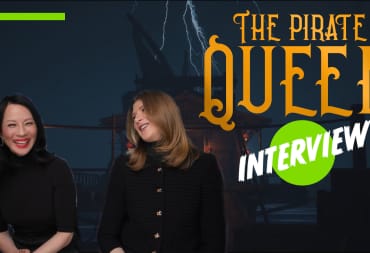Gaming has grown extensively beyond the stereotyped perceptions of the medium in decades past. No longer a niche product for a minority audience, most of gaming, specifically in the AAA market, is now mainstream and reaps the benefits of the multi-billion dollar industry that surrounds it. This is, of course, not without tension, as the industry expands and fragments into multiple niches of product.
One oft-talked about part of that niche is the representation and visibility of queer characters. The growing presence of such characters becoming notable icons in the mainstream focus of the industry is noticeable, with most of these characters now receiving critical praise for not only exploring LGBT issues but queer representation in general.
It is not surprising that the most memorable queer characters have come from the past seven years, but queer characters have always had representation in video games. There have been LGBT characters in prominent, even player-controlled roles since the 1990s, and even explorations of queerness going as far back as the late 1980s. Often though, these characters are forgotten because of their inclusion due to problems of representation or even their visibility. Yet, these characters, and the growing relevance of queer representation overall, invokes the spirit of gaming as counterculture in its purest form. Despite their often-rocky and in some cases insincere portrayals, the early history of queer representation is important to understand how queer characters have been shaped today.
It would be impossible to really discuss everyone, but overall a brief history of queer representation can help in showing the general gaming audience the overall progress that has led to these more prominent role models.
The Early Years (1980-1989)
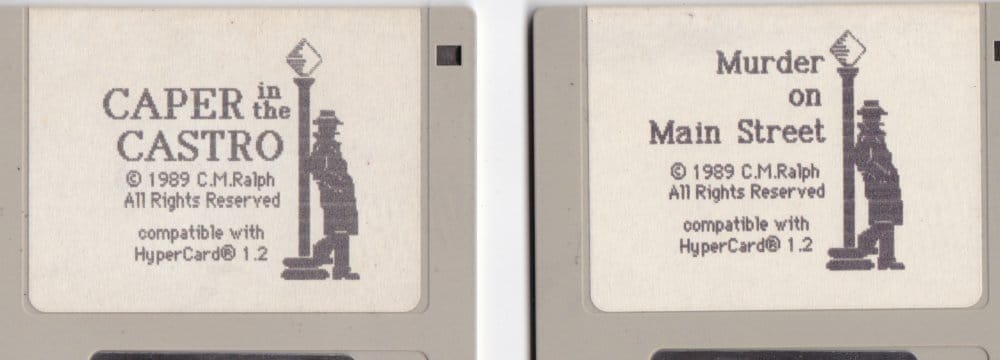
The very early years of gaming's heyday in the 1980s, of course, focused less on characterization and more on design and score chasing. The few queer characters that did exist were often relegated to general NPCs and often relied on tokenism, as a result, to mark them as different or to be a joke's punchline.
The earliest known game to feature a homosexual in the United States was the computer game Moonmist, an interactive fiction game for Apple II, Commodore 64, and Amiga systems released in 1986. In fact, a lot of early representation came from interactive fiction games, such as the French only Le crime du Parking and Circuit's Edge, which were similar titles that included gay, lesbian, and, transgendered characters, mostly as villains or side NPCs.
Interestingly enough, there was one underground game that featured more prominent roles for queer characters. Caper in the Castro was a"Charity Ware" game coded by ameuter programmer C. M Ralph in 1988. Specifically for fellow members of the LGBT community in California, Ralph asked those willing to download the title to donate a small amount to any AIDS-related organization of their choosing. The game itself was designed as a tongue-in-cheek murder mystery/puzzle game, filled with inside jokes and crass humor only familiar to the California LGBT community. It is also the first game on record to have a queer protagonist; in this case, the lesbian detective Tracker McDyke.
"I was coming from behind the orange curtain and the way were treated down there up to San Francisco and the way were treated in San Francisco. It was like two planets. I was so overcome with gratitude for the community that just embraced us, so I wanted to give something to the community. Sometimes creative projects are like that. They converge around a multitude of different things, and then that’s how this happened. The AIDS epidemic, my impulsive need to create things, and HyperCard’s abilities, everything. It all culminated." —C.M Ralph
Ralph would later sell the game with an official, mainstream release copy, named the Murder on Main Street to publisher Heizer Software. The second version of the game, while also fairly successful, effectively erased all traces of Caper in the Castro, changing the names and occupations of characters (Tracker was now known as McDuff, for example) and removing all LGBT references. She did this mostly to get the game sold to a publisher, who she feared would not purchase Caper in the Castro due to the LGBT content.
Regardless, Caper in the Castro became a fairly successful underground hit, even travelling abroad to Europe by 1989, thanks in part to the game spreading on the burgeoning computer bulletin board underground at the time.
First Steps (1989 -1996)
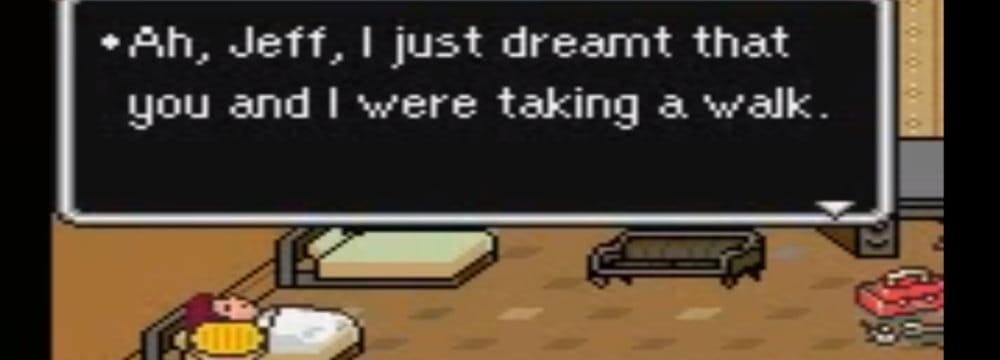
While Caper in the Castro is an exception, the overall model of queer characters would still be relegated to the side through the 1980s. It would not be until the early 1990s where one would see more prominent characters, though most of it would be done either accidentally or, again, rely on tokenism as the primary face for diversity.
The in-jokes were mostly minor references that have gotten lives of their own. The most prominent example is Birdo from Super Mario Bros. 2, who in the game's manual was explicitly named as a male who likes "dressing up" and going by the name "Birdetta." Nintendo has since downplayed Birdo's gender completely, treating her entirely as a female.
Another, more prominent example would be Poison from Final Fight and Street Fighter. Often considered the first transgendered character in gaming, Poison has a fairly checkered history thanks in part to publisher Capcom. Originally a female enemy (alongside the palette-swapped Roxy) in Final Fight in Japan, Poison and Roxy were planned to be cisgendered females but were then changed by Capcom to be "shemales" due to, of all things, concerns over violence against women. Capcom would further censor the game for western release by removing both characters completely, replacing them with two male thugs by the name of Billy and Sid for the 1991 SNES port release.
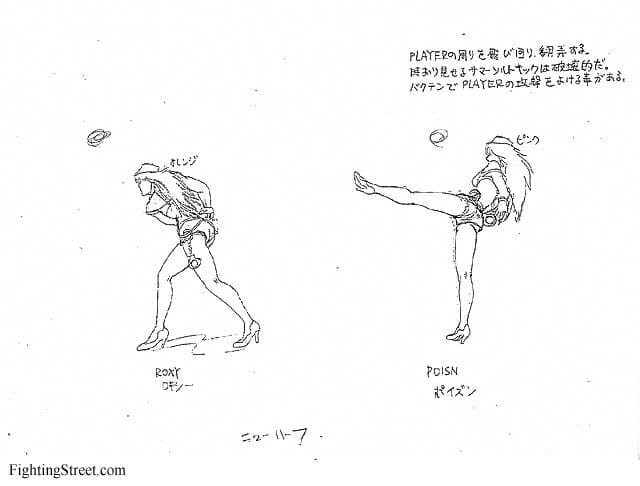
Capcom would go back and forth on Poison for two decades, with her being portrayed as cisgendered in the American produced Final Fight Revenge and mentioned as being a transvestite in the Capcom Classics Collection. People who worked on Final Fight have also given mixed responses to Poison’s gender over the years. Final Fight designer Akira Nishitani has stated that it is up to the player to decide, while Street Fighter IV producer Yoshinori Ono has stated initially Poison was post-op only in the West but has changed his stance on the matter twice since then. To say the least, Poison’s gender and status as a transgender character are left ambiguous by Capcom.
Poison does, however, represent something important for queer video game characters: the acceptance of transgendered characters, which can be seen through how she has been used throughout the Final Fight and Street Fighter franchises. Much of her character's gender identity has shifted over the years due to changes in culture and representation, with her becoming, at least in the eyes of many fans, one of the few transgendered characters in a video game, with the only other AAA example being Cremisius Aclassi from Dragon Age: Inquisition.
Most of the time, queer characters were actually purposefully censored for the West, mostly removing bits of dialogue from NPCs in games such as Phantasy Star II or Streets of Rage 3. In the West, only adventure and computer games made direct references to queer characters, but they were often overtly stereotyped. The first speaking role for a gay character, for example, was the FMV game Dracula Unleashed, but the character, the co-owner of a bookstore named Alfred Horner, was portrayed as a pervert. Other games also indirectly referenced a LGBT subtext to character relationships, most notably The Beast Within: A Gabriel Knight Story between Gabriel Knight and the villain Baron von Glower, and even Tony from Earthbound, with series creator Shigesato Itoi, confirming it to be the case years later.
“Well, for example, there’s a gay person in MOTHER 2. A really passionate friend who lives in an England-like place. I designed him to be a gay child. In a normal, real-life society, there are gay children, and I have many gay friends as well. So I thought it would be nice to add one in the game, too.” —Shigesato Itoi
One interesting example, if rightfully forgotten from this time period, would be the character of Curtis Craig from Phantasmagoria: A Puzzle of Flesh. The second game in the Phantasmagoria series, which intended to be an anthology of FMV-styled point and click adventure games, was not a big hit when released in 1996, with most complaints being leveraged to the absurdity of the game’s puzzles and an incoherent B-movie storyline with low production values. Yet, the B-movie charm is often fondly remembered by die-hard fans, and with that, the plight of Curtis gets a modicum of recognition for attempting to bring complexity to the game.
Curtis is effectively an introverted, mild-mannered office monkey, but throughout the game he undergoes a metamorphosis of sorts that delves into murder and insanity. One scene in the game has Curtis admit to a therapist that he has feelings towards his flamboyantly gay co-worker Trevor Barnes—at one point almost sharing a kiss with Trevor late in the game. Curtis also has a sexual relationship with another co-worker named Therese, a S&M Dominatrix, and is also attracted to another female co-worker in Jocelyn, creating a confusing, de-facto love triangle that he must resolve.
https://youtu.be/AnhI-5cuhiI?t=5630
The relationships Curtis has is underpinned by confusion and trauma, which serves as the crux of the entire game's plot and, ultimately, the big twist about Curtis’ true nature. While somewhat provocative in 1996, Phantasmagoria was one of the first games to depict homosexual characters in an everyday, even positive light. The character of Trevor is often cited as one of the few “good characters” in the entire game despite his "camp" stereotyping, and his relationship with his friend Curtis is arguably the most natural. Curtis’ own confusion has also been retroactively examined by some to be symbolic of being “in the closet,” though the game makes it clear that his persisting trauma is from another source.
While Phantasmagoria: A Puzzle of Flesh is a mess of a game, it was no stranger to confrontation, being banned in countries like Singapore and Australia for its strong sexual content and violence. The relationships Curtis had throughout the game also stand as a testament to something that could have been, and at the very least, it gets credit for not only trying something new but providing an openly bisexual character as the sole protagonist—a first at the time.
The Hypersexuality Era (1996 -2003)
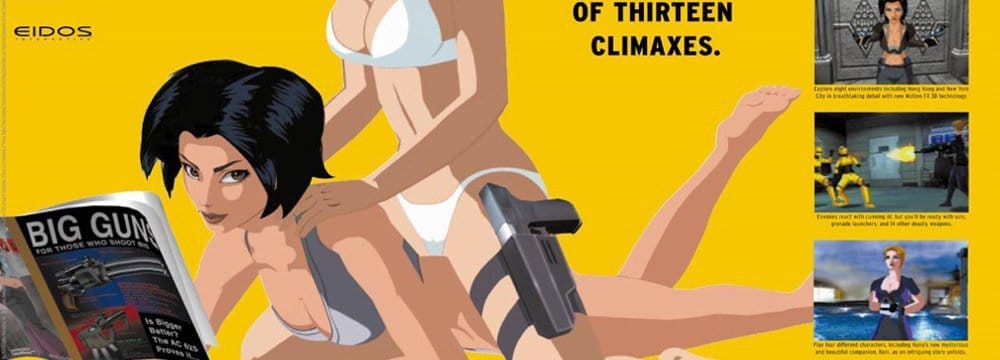
The late 1990s was an odd time when it came to games and sexuality. It was gaming's adolescent age, the era where hyper-sexualized characters were king. Lara Croft and Duke Nukem were perhaps the biggest two stars of the era, the runaway sex symbols that defined the attitude of the 1990s, and a growing dependence on action, violence, and sex appeal that made crackpots such as Jack Thompson infamous figures in the gaming industry. It was also an era of sexual pandering, and often queer characters would be caught in the crossfire.
Sometimes it was self-inflicting, purposefully using queer characters as a marketing tool towards a predominantly straight demographic. Arguably the most prominent example would be Hana Tsu-Vaschel of the Fear Effect games. Fear Effect was a smash hit on the original PlayStation, a 1998 action game with a fantastic cel-shaded style that set it apart from the likes of similar titles, such as Dino Crisis and Resident Evil. Yet, most forget about Fear Effect, save for her love affair with the female mercenary Rain Qin in the game’s prequel, Fear Effect 2: Retro Helix.
The relationship between Hana and Rain was not one of the deepest, a fact that is often punctuated by the very open (and for the time, controversial) advertisement campaign that depicted the two women as lovers. Full page ads of Rain massaging Hana in their lingerie (with a gun strapped to Rain’s thigh of course) became the major selling point for Fear Effect 2, and often overshadowed the game itself.
The game's more flagrant use of sexuality, though, attempted to depict Hana as a "femme fatale" character who used her sexuality as a weapon for espionage and the like. In-game, her and her interactions with Rain were never fully intimate but designed to be tantalizing on purpose. Fear Effect 2 was perhaps the most blatant example of sexual pandering, using lesbianism to help promote the game to a primarily teenage male audience.
The director of Fear Effect 2, Stan Liu, went on record to state that Hana is bisexual, and that her sex was intended to not be an issue other than creating drama for a potential love triangle in what would be the now canceled sequel, Fear Effect: Inferno. Years later, the Kickstarter-backed Fear Effect: Sedna continues the relationship between the two and even attempts to rectify the more blatant pandering aspects of the original portrayal, with little success.
Queer characters were no longer exclusively on the periphery, with most now being used similar to Hana to help promote a game as "adult" or "edgy" for their growing audience. At the same time, there was a growing awareness of same-sex relationships, as games moved beyond being just about gameplay and exploring narratives and cinematic-style cutscenes. Most of this stemmed from player-centric relationships, with the majority being heterosexual. An interesting trend that began in this time period, however, was the use of player-centric relationships to explore queer couplings. While BioWare a decade later would perfect this formula, the beginnings of this can be seen in several games, most notably RPGs, where character sexuality was entirely fluid based upon the needs of the player, versus a strict characterization option of the player's avatar.
Star Ocean: The Second Story was one of the first games to feature this, where the player characters, Claude or Rena, could go on dates with same-sex party members. Other games would push for minor queer relationships, though with very limited success. One example would be Fallout 2, which was technically the first video game to ever include a same-sex marriage option for players, though it was done mostly for comedic effect over anything else.
The title was a "go for broke" experience, designed to be as shocking as possible when released, as developers such as John Deiley, Colin McComb and others have admitted over time. Part of that was the game's inconsistent tone and decisively dark humor, which in and of itself is divisive among fans. With that was the inclusion of Miria and Davin, two interchangeable NPCs that can become the player's spouse in a sidequest if they are Charismatic enough, or in some cases, forced into a "shotgun wedding" depending on the mishaps of the player.
Miria and Davin are often seen as "joke" characters, with subpar statistics that can’t be leveled up as the game progresses unlike other NPCs. Both characters also never leave the player's side until they are killed or if the player divorces them, and lack any real character themselves in the grand scheme of the game. Their only benefit besides being weak companions is the "married" reputation title, which really serves no benefits. Even the game is in on the joke, with the Pip-boy icon being purposefully subversive to showcase the marriage as being a poor match-up regardless of whom you wed.
Their inclusion as a same-sex marriage is basically an afterthought, likely designed more so for the comedic factor of a mediocre character attached to the player as a hapless spouse, rendering their sexuality practically meaningless in the process. The Fallout franchise would go on to showcase more complex queer characters, most notably Arcade Gannon and Veronica Santangelo from Fallout: New Vegas, but their inclusion of same-sex marriage in Fallout 2 was emblematic of the time period, part of a broader punchline to be subversive or edgy.
There are, of course, some exceptions, though for Western audiences they would be difficult to find. One place to start would be Atlus' Persona series, which experimented with a gay character in the form of Jun Kurosu for the RPG Persona 2: Innocent Sin in 1999. Predating the more famous Kanji Tatsumi of Persona 4, Jun was openly homosexual, depicted as an extremely feminine stereotype that borrowed from Japanese Yaoi sub-culture.
Much of his characteristics and more in-references point to his femininity, but it was not done in a mocking sense seen in other games at the time. For Jun, his more feminine characters were a part of his own character, and much of his story arc is overcoming persecution of his self-identity, a common theme in the Persona games and their teenage protagonists. Some of Jun's qualities include the use of flowers as a weapon and a character motif, wearing makeup (often with female friends exclaiming he looks prettier than they do in it), and, most importantly, having a deep relationship with the game’s protagonist, Tatsuya Suou.
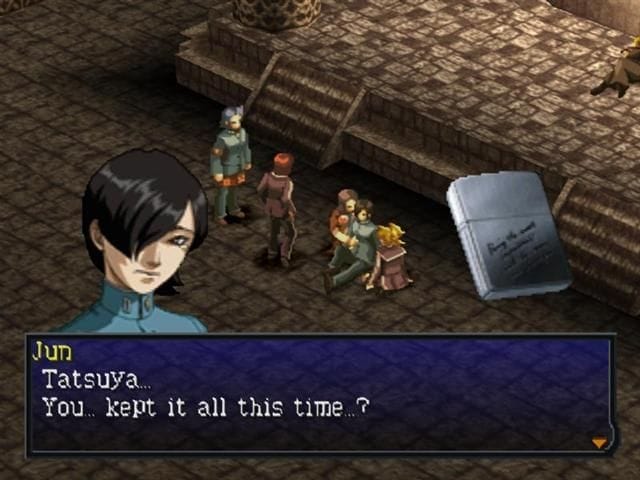
Jun and Tatsuya were childhood friends with a deep connection, who shared gifts as children which they kept throughout their lives. Jun is also connected deeply to the Persona 2's main plot through the game's primary villain, leading to another layer in his character that helps manifest his growth and feelings towards his fellow party members, but especially Tatsuya. This can lead to Tatsuya and Jun entering a relationship with each other if the player wishes it, making Innocent Sin one of the first games to definitively state a homosexual relationship between two males, versus using innuendo and friendly dates, as seen in previous RPGs.
To date, Jun is the only male character a male Persona protagonist can enter a relationship with, and for some who worked on the game (including the character designer Kazuma Kaneko) the canon choice for Tatsuya. At one point, the character of Jun was cited as the primary reason for the game never coming to the United States until the PSP Remake in 2011. This turns out to not be true (the same goes for the depiction of Nazi symbols and even a likeness of Adolf Hitler being in the game) but instead a shortage of personnel at Atlus who could localize the game for translation.
While Jun has a minor role in the game's official sequel, Eternal Punishment, his inclusion as a party member and one of the few openly homosexual characters in the game has transformed him into a minor icon within the Persona fanbase. In an era of hypersexual characters and constant pandering, Jun stands out as a small but important counterweight to the norms of the time, showing that queer relationships were steadily becoming more mainstream.
Going Mainstream (2005 - 2012)
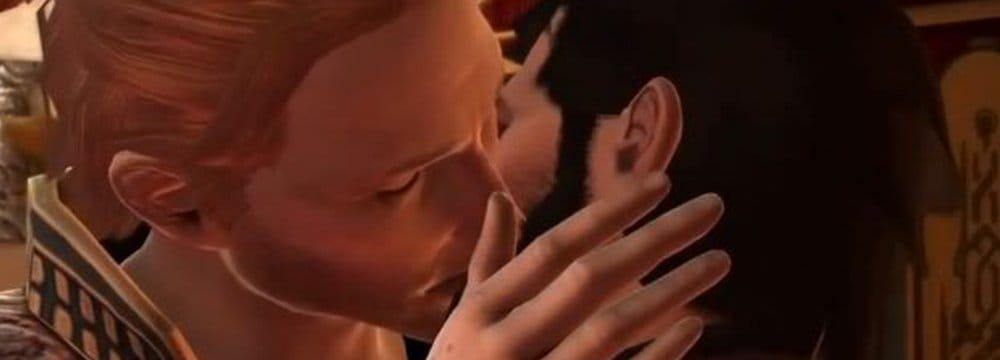
As games grew out of its awkward teenage phase, they slowly began to enter the mainstream consciousness thanks in part to accessibility through technology. Nintendo led the charge with the Wii, and Sony had a hammerlock thanks to the PlayStation 2, both consoles going strong long into the end of the 2000's. Budgets were growing and some genres began to make billions in revenue, leading to big business for game companies.
Big business, of course, meant lower risks, and with the perception of the general gaming audience still stuck in the hypersexuality era, the "core" demographic for most companies remained focused on the male teenage audience. By the end of the 2000s that would begin to shift, but it would be through incremental changes over time that rarely, if ever, "rocked the boat" of expectations.
Early surveys in the mid-2000s, such as Jason Rockwoods "Gaymer Survey" by the University of Illinois at Urbana-Champaign's were the first of it's kind to collect data specifically to showcase the presence of the LGBT community in video games. Though the survey was not perfect, what was ultimately measured was a demographic split using the Kinsey scale, with 91% of the more than 10,000 applicants being male—28% of those surveyed stated they were completely heterosexual and 23.7% stated they were completely homosexual.
The demographics were beginning to shift, though very slowly by 2006. For queer characters, it was a step backward for most of the 2000s, at least in the AAA market by occupying the same space as the previous two decades. Most references would ultimately be based on off-handed comments or joke references, hinting fairly overtly to a character's sexuality. Many queer characters would be cast as villains as well, as seen in AAA titles, such as Assassin's Creed, Red Dead Redemption, Metal Gear Solid 3: Snake Eater, and BioShock. The casting of queer characters as villains is often criticized in sociological circles, as were the stereotyping of "camp gay" characters such as Mokoto from Enchanted Arms or Jann and Dallas in Valkyria Chronicles.
The AAA market was sparse at the time, though one notable exception was BioWare. Starting with Juhani in Star Wars: Knights of the Old Republic, BioWare would go on to include same-sex options for players in almost all subsequent titles. Most of their inclusions went beyond standard tokenism as well, though these relationships would be criticized for being incredibly wooden and unnatural in terms of how the relationships were filmed. BioWare has, of course, improved over time in the cinematic presentation and dialogue of their romances, but the important step was BioWare taking the romances seriously, though not without some misgivings. BioWare still flirted with stereotypes easily, such as Dragon Age: Origins' Zevran often being criticized as a bisexual lothario, or the transvestite Serendipity, who was used for comic relief in Dragon Age 2. In an era where few AAA games were trying to take queer relationships seriously though, BioWare stood out as an exception to that rule.
In fact, most games in the era that took queer relationships seriously were from the growing number of indie titles. A lot of these titles would be in the realm of visual novels and interactive fiction games, much like the early underground success of Caper in the Castro. Violet, an interactive fiction game by developer Jeremy Freese, featured several potential lesbian relationships depending on the player's gender. The player also had the ability to change their sex and gender mid-game, further complicating the plot but showcasing an alternative relationship that explores bisexuality as well. Visual novel Don't Take it Personally Babe, It Just Ain't Your Story by Christine Love also explored privacy in the digital age with two gay relationships between a set of male and female couples, while the player character interacts with them as their school teacher.
Games would also start exploring characters beyond the LGBT community, though this would be a very rare occurrence for the next decade. The first example came from the cult classic RPG NieR, by developer Cavia in 2010. Cavia had a long history with queer characters, starting with the antagonist Yaha from Drakengard 2. The NieR series, of course, has featured lesbian protagonists with the androids 6O, 16D, and 11B in the critically acclaimed NeiR: Automata by Platinum Games. NieR itself features a canonically gay protagonist in the form of the companion Emil, but the first NieR game also contains another party companion, the constantly swearing Kainé. Kainé is unique for being an intersex character, a rarely discussed or even represented part of sexuality in games.
Intersex is an umbrella term used to define people who are born with sex characteristics that do not typically fit binary notions of male or female bodies. This can include genitalia, gonads, and even sex hormones, and in some cases may not even manifest until puberty.
The relationship between intersex individuals and the LGBT community is a complex one, with varying opinions on the subject regarding the inclusion of Intersex individuals under the same umbrella term. For video games, a prominent character like Kainé can showcase some of the hardships and decisions someone who is intersex may go through. Kainé identifies as a female, and by all intents and purposes is a woman who enjoys wearing lingerie because it makes her feel more feminine. Her status as both being half-shade (the primary enemies of NieR) and intersex left her open to persecution, making her a cold character as she reached adulthood with all but her grandmother and, eventually, the rest of the party.
Kainé was ahead of her time in many ways because of her more overt portrayal of an alternative gender and sexuality. While not the most nuanced portrayal, Kainé is nonetheless a complex character, and NieR was not afraid to explore issues of sex and gender in a more provocative way than ever done before in a video game.
Since Kainé, we have seen few characters take up that mantle, with the best example arguably being the asexuals Maya and Zer0 from Borderlands 2, though this is only confirmed by lead writer Anthony Burch on his ask.fm account. Asexuality, like intersexuality, is often not explored due to a lack of knowledge or understanding of what it means to be asexual. Like other queer groups, however, asexuals have become a growing part of gaming's demographic. Their inclusion, however, even if it is only through Burch's own authorial intent, is still welcomed by some fans and an important step forward for more inclusivity beyond even the LGBT community.
The Modern Era (2012 - Present)

Borderlands 2, much like BioWare's whole catalogue, featured numerous queer characters, this time in a casual format—from NPCs whom were tortured by the games villain Handsome Jack, to one-off references from prominent NPCs such as Sir Hammerlock, Tiny Tina, and Mad Moxxi, and even player characters Axton and later Athena were confirmed to be bisexual and homosexual, respectively. In conjunction with BioWare—and further inclusion of characters in games franchises like Fallout, Assassins Creed, and Grand Theft Auto—queer characters were beginning to "come out" so to speak, being used less as a punchline but more so as dynamic characters.
It was not an easy transition. Sometimes this would take the form of proselytizing a "live and let live" attitude directly to the players, as was the case in Grand Theft Auto IV in 2008, though they constantly rely heavily on stereotyping homosexuals as campy and over the top for satirical effect. BioWare's approach was to provide queer relationships as an optional piece of content, though they were criticized for the growth of "playersexual" characters that had no personal characteristics when it comes to sexual desire, effectively casting NPCs as all bisexual for sake of ease for the player to provide options.
It wouldn't be until the early 2010s where queer characters would finally be given starring and non-token roles in the AAA market. Most of the AAA market would be playing catch up instead with the indie market, with titles like Gone Home by the Fullbright Company making the most traction. Invoking classic exploration and mystery games, in conjunction with visual simulation elements, Gone Home was a written tale about exploring your childhood home, piecing together what has happened while you were away at college in the mid 1990s.
Gone Home is a major turning point in some ways. First, it was an indie game that received heaps of praise from the gaming press, mostly due to the handling of the character Samantha Greenbriar, the younger sister to protagonist Katie. Gone Home was both praised and criticized for the story focus on Samantha, along with other elements of the game, with the pejorative "walking simulator" coming into vogue as a major criticism over time.
In a lot of ways, Gone Home invoked the more underground spirit of gaming that has been present since the 1980s, becoming the new Caper in the Castro, Violet, and other underground indie games, mostly found in the interactive fiction and visual novel genre. Gone Home proved that alternative style games, atypical from the standards expected in the AAA world, could thrive in the modern day ecosystem for video games.
With that, indie developers would begin promoting their own queer games, many of them visual novels or graphic adventure games. Some of these games would also double as informative to non-LGBT audiences, exploring issues of homophobia, sexual attraction, and more. Prominent examples include Coming out on Top, a gay dating simulator; Coming Out Simulator 2014, an interactive fiction game about a teen coming out to his mother as bisexual; and This is Where I want to Die, a German visual novel where the protagonists are gay bashed by homophobes.
GaymerX, an LGBT-oriented gaming convention, would also get involved with game development with the Cyberpunk Adventure game 2064: Read Only Memories, through their development wing MidBoss. Funded through KickStarter for over $64,000, 2064 was to not only be a tribute to 1990s adventure games with the inclusion of queer characters but deals with overarching themes such as discrimination, transhumanism, and the evolution of the queer community.
The indie gaming market is the main source for finding queer characters, relationships, and discussions to this day. It is through indie games, mostly in visual novels and adventure games, we see prominent queer characters in major supporting or starring roles devoid of heavy stereotyping, with the AAA market playing catch up to the shifting demographics.
The AAA market would not be left out for long. The mid-2010s would see a major rise in queer characters and their representation across multiple genres. The biggest example would arguably be Ellie from Naughty Dog's The Last of Us. While the game featured a gay character in the form of the survivor Bill, the surprise of Ellie being a lesbian in the game's critically acclaimed DLC, Left Behind, caught many players by surprise in early 2014.
Left Behind was praised for the strong characterization of Ellie and her friend Riley, with the industry considering their relationship a "breakthrough moment" for its natural portrayal. While there was backlash over their kiss, much like Gone Home it opened the floodgates for the AAA industry to push further with visible queer representation. Companies such as BioWare, Ubisoft, Blizzard, and DontNod have subsequently filled that role across a variety of genres, with Ellie making a prominent return in The Last of Us 2, coming full circle as being one of the few definitively queer protagonists in the modern era.
Final Thoughts and Going Forward
Not all of these characters are truly memorable or even good choices for queer representation, with more prominent examples in today's gaming market. Thanks to the indie resurgence through crowdfunding and the further splitting of games into various small niches, queer characters have found a comfortable presence in the gaming industry, invoking the original counterculture spirit that video games once had as an overall hobby. The struggle of AAA representation continues still, mostly due to constant backlash against some corners of the industry. In some cases, the charges of tokenism and stereotyping are still prominent, while companies such as Nintendo have come under fire for a lack of representation in some games.
The constant cultural struggles of the gaming industry has seen bad blood and mistrust, yet queer representation maintains a constant presence in video games regardless of cultural perception. Regardless of opinion, queer characters have become an integral part to the growing popularity of the medium. As our understanding and acceptance of queer characters broadens, so too will the type of representation we will see in video games. Yet, each of the examples above still represents a form of inclusion, done well or poorly, that has allowed for the growing demographics of the modern age. Looking back at these characters only helps the industry in the long run, informing us of how far we have come, and how far we can go from here.
Thank you for reading this article. If you have any questions or comments, please leave them below.
Have a tip, or want to point out something we missed? Leave a Comment or e-mail us at tips@techraptor.net
